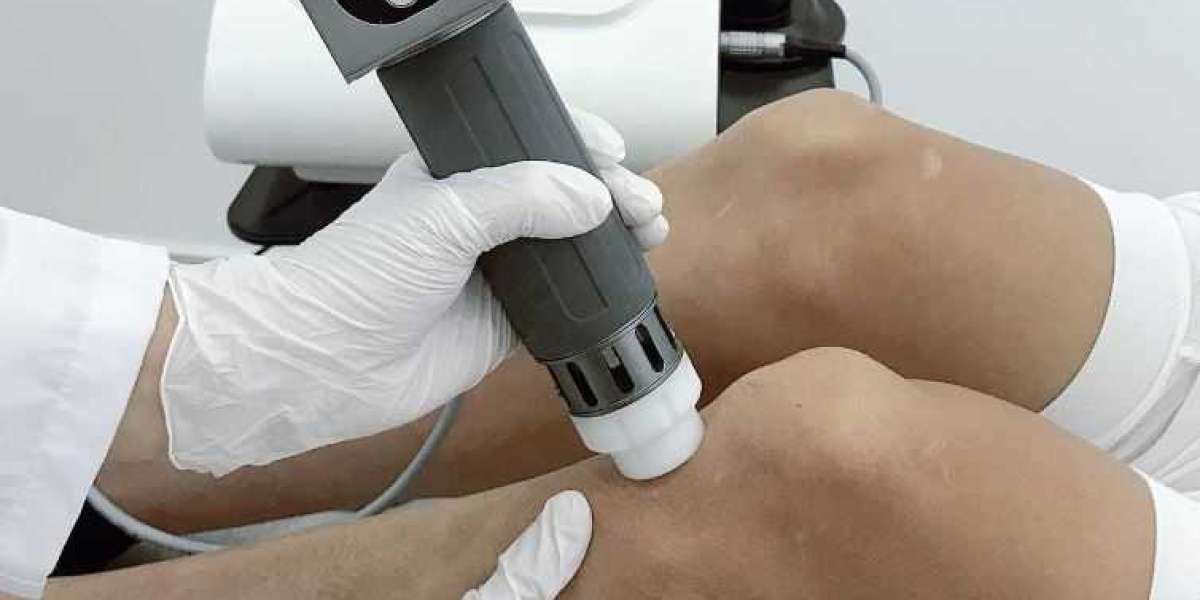Softwave shockwave therapy, also known as extracorporeal shockwave therapy, has emerged as a groundbreaking treatment for managing joint issues, offering a non-invasive solution to pain relief and functional improvement. This innovative therapy utilizes shock waves to promote healing, reduce inflammation, and enhance blood circulation around the joints, providing significant benefits for those suffering from various joint disorders, including osteoarthritis, tendonitis, and bursitis. This article delves into the key benefits, the scientific mechanism, patient experiences, and what patients can expect from Softwave shockwave therapy sessions.
Key Benefits of Softwave Shockwave Therapy
Non-Invasive Treatment
One of the primary advantages of Softwave shockwave therapy is its non-invasive nature. Unlike surgical options, Softwave shockwave therapy does not require incisions, which means there is no prolonged recovery period or risk of infection associated with the procedure. This makes it especially attractive for patients who are unable or unwilling to undergo surgery due to potential complications or lengthy rehabilitation times. For joint pain sufferers, the appeal of a treatment that requires no surgery, and thus no anesthesia or incisions, is substantial, offering a safer alternative with fewer risks and quicker recovery.
Pain Relief
Many patients experience significant pain relief after just a few treatment sessions. Softwave shockwave therapy aids in reducing inflammation and accelerating the body’s natural healing processes, which contributes to decreased pain levels. The therapy targets pain at its source, creating cellular stimulation and circulation improvements that help reduce chronic pain over time. By stimulating blood flow and promoting cellular repair, Softwave shockwave therapy can alleviate pain and enhance patients' quality of life, allowing them to enjoy daily activities with minimal discomfort. For individuals looking for softwave therapy for pain management without surgery or medication, this approach offers a compelling alternative.
Improved Joint Function
By enhancing blood flow and stimulating the regeneration of tissue, Softwave shockwave therapy helps improve the range of motion and flexibility of joints. This improvement is crucial for individuals who experience joint stiffness due to osteoarthritis, overuse injuries, or athletic strain. Through regular Softwave shockwave therapy sessions, patients may see a progressive increase in joint flexibility, helping them regain lost mobility and potentially return to physical activities they once enjoyed. This functional improvement is one of the primary reasons why many athletes and active individuals choose Softwave shockwave therapy for both preventive and rehabilitative purposes. Those who seek softwave therapy for knees especially benefit from enhanced joint mobility and reduced discomfort.
Safe and Effective
Softwave shockwave therapy has been approved by various health authorities, including the FDA in the United States. Clinical trials and research studies have consistently demonstrated its efficacy and safety for treating joint and musculoskeletal conditions. This FDA approval is significant because it reassures patients of the rigorous testing that Softwave shockwave therapy has undergone. Moreover, clinical evidence shows that it can effectively treat both chronic and acute joint conditions without the adverse effects commonly seen with medications or surgical procedures. The evidence supports that Softwave shockwave therapy can be a safe, long-term solution for pain and joint health, offering patients a non-surgical pathway for relief.
Understanding the Mechanism of Softwave Shockwave Therapy
Softwave shockwave therapy works by emitting low-energy acoustic waves that penetrate the skin and tissue to reach the affected joints. These shock waves are generated by a specialized machine and delivered through a handheld device that targets specific areas of the body. The energy from the shock waves stimulates the cells responsible for bone and connective tissue growth while enhancing the blood supply to the affected areas. This dual action not only accelerates the healing process but also encourages the formation of new blood vessels, a process known as angiogenesis.
Through these mechanisms, Softwave shockwave therapy promotes an internal healing response that makes the therapy particularly effective for conditions such as osteoarthritis, tendon injuries, and other degenerative joint disorders. For those seeking targeted solutions, softwave therapy for knees has been shown to deliver specific benefits for knee pain and joint function. The therapy helps improve cellular metabolism, increase circulation, and stimulate natural regeneration within damaged tissues. As the body heals from within, the benefits of Softwave shockwave therapy can lead to sustained improvements in joint health over time.
Patient Experiences with Softwave Shockwave Therapy
Many patients who have undergone Softwave shockwave therapy report improvements in their symptoms after just a few sessions. For instance, a patient suffering from knee osteoarthritis noted a remarkable reduction in stiffness and pain, which significantly improved their quality of life and mobility. Similarly, another patient with shoulder bursitis experienced relief from intense pain and was able to return to routine activities without discomfort.
Patient testimonials often highlight the minimal discomfort experienced during the procedure and the quick return to daily activities. Many appreciate that they can go back to work or participate in physical activities almost immediately after their sessions. The absence of significant side effects is another common theme in patient feedback, as Softwave shockwave therapy does not carry the same risks associated with surgical interventions or prolonged medication use. This feature has become a major reason why people increasingly turn to Softwave shockwave therapy as a reliable solution for joint pain management and improved mobility. For those who prioritize softwave therapy for pain management, the relief offered by this treatment has been a game-changer.
What to Expect During a Softwave Shockwave Therapy Session
A typical Softwave shockwave therapy session is relatively quick and does not require any special preparation. During the treatment, patients might feel a tingling or tapping sensation as the device is applied to the affected area, but this is usually well tolerated. Each session lasts about 15 to 20 minutes, depending on the size of the area being treated and the severity of the condition.
Most practitioners recommend a series of sessions to achieve optimal results with Softwave shockwave therapy. The specific number of treatments varies based on individual conditions but typically ranges from three to six sessions. Patients often start to notice improvement after the first few treatments, with benefits continuing to accumulate over time as their joints respond to the therapy. This gradual improvement often results in long-lasting relief and enhanced mobility.
Conclusion
Softwave shockwave therapy presents a promising option for individuals struggling with joint issues. Its non-invasive nature, coupled with its effectiveness in reducing pain and improving function, makes it a favorable alternative to conventional treatments that often involve drugs or surgery. Whether used as a standalone treatment or as part of a comprehensive rehabilitation program, Softwave shockwave therapy holds significant potential to enhance joint health and overall quality of life.
The benefits of Softwave shockwave therapy go beyond immediate pain relief, extending to improved joint mobility, enhanced circulation, and tissue regeneration. These factors make Softwave shockwave therapy a versatile treatment for a wide array of joint and musculoskeletal conditions. For those specifically seeking softwave therapy for knees or softwave therapy for pain relief, Ventura Spine and Disc offers an invaluable solution. As more people seek alternatives to invasive procedures and long-term medication, Softwave shockwave therapy continues to stand out as an effective, safe, and patient-friendly solution to joint health challenges. With growing scientific support and numerous patient success stories, Softwave shockwave therapy is poised to remain a leading option in non-invasive joint care.







